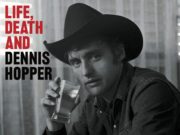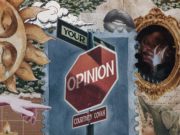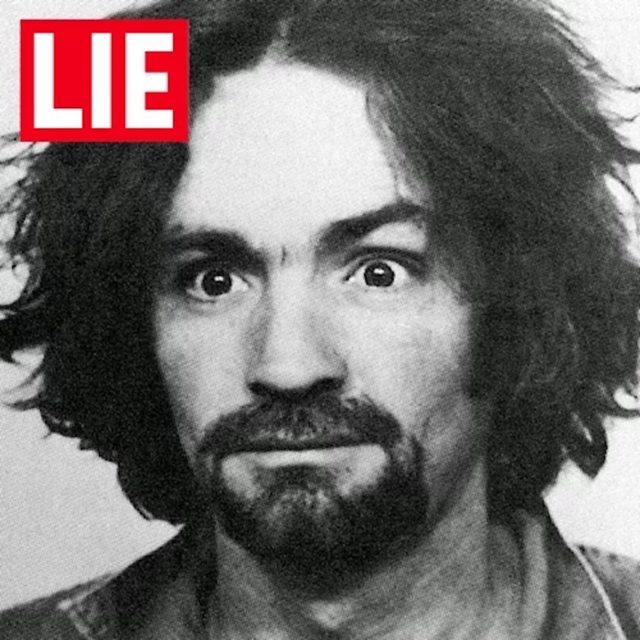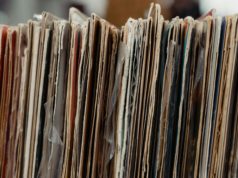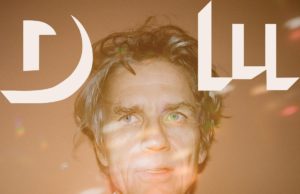 Blue Öyster Cult, The Cult (fka Southern Death Cult), Lisa Lisa & Cult Jam, Cults, Living Color’s Cult of Personality… There are loads of cults in popular music — not only in name, but also in song. Some actual real-life cults have made records, and sometimes real-life musicians either came from cults or joined one after their time in the spotlight. Let us examine.
Blue Öyster Cult, The Cult (fka Southern Death Cult), Lisa Lisa & Cult Jam, Cults, Living Color’s Cult of Personality… There are loads of cults in popular music — not only in name, but also in song. Some actual real-life cults have made records, and sometimes real-life musicians either came from cults or joined one after their time in the spotlight. Let us examine.
One of the most famous is Charles Manson, who wasn’t a terrible songwriter. In fact, even The Beach Boys ripped off one of his songs. In the late ’60s, Manson made a bunch of demo recordings which have made their way onto various, overpriced bootleg releases over the years. The Beach Boys connection came after drummer Dennis Wilson ended up picking up a pair of Manson’s followers who were hitchhiking — twice. The second time, Wilson brought the women to his house and learned that their guru was a musician, too. Not long afterward, Wilson came home from a studio session and found Manson waiting for him in his Sunset Boulevard driveway, and a house full of his followers already inside. Rather than being pissed off by this, Wilson was quite taken with the little weirdo and they became friends. Several members of the Manson Family lived at Wilson’s home for around six months, until he had enough of all the heavy acid-taking Manson and his followers were doing. Wilson simply split, and continued to let them use his home. The cult stole his stuff, trashed his cars and were evicted just as the lease was about to expire.
The Manson Family evolved into a doomsday cult, bent on starting a race war. He and his followers were convicted of nine murders, though investigators suspect they were responsible for around a dozen more. The most notorious occured in August, 1969, when 26-year-old actress Sharon Tate was brutally slain along with four others. Tate, who was nearly nine months pregnant, was stabbed to death and then hanged. The word pig was written on the front door in her blood.
Manson’s recordings happened as a result of his connection with Wilson, who had introduced the ex-con to producer Terry Melcher. Wilson and Melcher directed engineer Stephen Desper to record the demos at Brian Wilson‘s home studio. One of the songs, Cease To Exist, was covered by The Beach Boys (and credited to Dennis Wilson) under the title of Never Learn Not To Love and issued as the flipside of their December 1968 single Bluebirds Over The Mountain — months before the murders.
Few bands have had as much turmoil as Fleetwood Mac. Their founder Peter Green hated the well-fame his talent brought and left the band at the height of his popularity. Self-medicating with heavy drug use, he was eventually diagnosed with schizophrenia and spent much of the mid-to-late 1970s in psychiatric hospitals, receiving shock treatments. He slowly re-emerged at the end of the decade. Guitarist Danny Kirwan struggled with anxiety, nerves and had a generally fragile mental state as well — coupled with an oppositional short temper and an increasing dependence on alcohol and drugs. He was fired from the band in 1973 and did a few solo albums until 1979, when he left the business. Kirwan endured homelessness in the ’80s and ’90s, until Mick Fleetwood filed a missing-persons report in 1993. Kirwan was tracked down to a shelter where he’d been living for four years. He remained in hostels, shelters and care homes (when he wasn’t homeless) for the remainder of his life — eventually dying in his sleep in June 2018. He didn’t attend Fleetwood Mac’s 1998 Rock And Roll Hall of Fame induction ceremony in 1998.
The boozy band also had four members involved in two divorces — Christine and John McVie, and Stevie Nicks and Lindsey Buckingham. Buckingham was fired from the band in January 2018 over disagreements over a planned tour. But the cult connection is another founding member — singer/guitarist Jeremy Spencer. While on tour in 1971, Spencer had a miserable mescaline experience and started becoming dissatisfied with the band and his work with them. An earthquake in L.A. further freaked him out and he pleaded with Green to cancel the leg of a U.S. tour taking them through California. The band refused, so on Feb. 15, 1971, Spencer slipped out of the hotel room he was sharing with Fleetwood to visit a Hollywood Boulevard bookshop — and never returned. The band had to cancel their gig that night at the Whiskey A Go Go. Days went by before Spencer was eventually found to have joined The Children Of God. He couldn’t be persuaded to come back, so the band brought Green out of “retirement” to help them finish their tour.
The Children of God were deemed to be an authoritarian cult led by founder David Berg and found to have engaged in systematic ritual abuse of children. For a time the group used sex to attract converts. Berg was known to call himself King David, Moses, Moses David and Father David. At its height, COG had tens of thousands of members — and Spencer is still affiliated with them. The cult has been known by several different names. From 1968 to 1977 it was Children Of God, then Family Of Love until 1981, followed by The Family, and finally, The Family International since 2004.
Spencer didn’t quit music after joining. In fact, he promptly cut a record with his new cultmates called Jeremy Spencer & The Children in 1972. It flopped. He made a solo album in 1979, but focused on his Children Of God duties above all. He didn’t do any other recordings until resuming his career in 2005. Spencer has been fairly productive ever since.
He’s not the only high-profile person with ties to Children Of God — Walk The Line star Joaquin Phoenix and his brother River were raised in it, as was actress Rose McGowan. Musicians who were brought up in the cult include Chris Owens of Girls and pop singer Susan Justice.
The followers of Indian spiritual leader and meditation guru Sri Chinmoy have been repeatedly accused of being a cult. Chinmoy moved to the U.S. in the ’60s and established a meditation centre which eventually had thousands of members in 60 countries. There were allegations of sexual impropriety and grievances based on the strict rules involved with being a follower — no alcohol, meat, drugs, caffeine or pets. They were required to remain celibate and refrain from socializing with non-followers. Carlos Santana was given the name of Devadip by Sri Chinmoy in 1973 while he studied under him for nearly a decade. Guitarist John McLaughlin was given the name Mahavishnu, which was even more prominent due to the fact that he named his band Mahavishnu Orchestra. McLaughlin’s 1971 album My Goal’s Beyond was dedicated to Sri Chinmoy. In 1973 he and Santana did an album together which was inspired by their involvement with Chinmoy, called Love Devotion Surrender.
Scientology founder and sci-fi novelist L. Ron Hubbard was an aspiring musician — but, really, his musical legacy is something closer to bandleader or overseer. He’s seen on the cover of the 1974 psych free jazz album Power Of Source by The Apollo Stars. This was a jazz septet he put together and produced, claiming in the liner notes that Hubbard “developed an incredible new sound in music” drawing from “his movie experience and early years as a professional singer.”
Clearly these are talented musicians. Hubbard has had a profound influence on other musicians over the years. Van Morrison dedicated his 1983 album Inarticulate Speech Of The Heart to him in the liner notes, and the musicians with known ties or former ties to Scientology include Beck, Isaac Hayes, Doug E. Fresh, Edgar Winter, Juliette Lewis, Sonny Bono — oh, and of course, John Travolta.
Wackier than that 1974 album was Hubbard’s 1982 album Space Jazz, which was intended to be a soundtrack for his novel Battlefield Earth — one of the books upon which Scientology was based. The album features involvement of some famous musicians including Chick Corea, Stanley Clarke and Nicky Hopkins. It’s pretty weird, thanks in part to the group’s decision to spend $30,000 on a Fairlight synth. Copies of the original LP, released in a gatefold sleeve, can be had on Discogs for around $20.
If you haven’t seen the documentary The Source Family (2012), you definitely should. It’s on Amazon Prime. The film tells the story of the religious movement which started with a successful Sunset Strip health food restaurant in the early ’70s and expanded into a psychedelic rock band and commune. The owner and founder of The Source restaurant was James Baker, who changed his name to Father Yod/Ya Ho Wha and became the patriarch of The Source Family — a commune of 150 young people who lived with him in the former Hollywood Hills mansion of newspaper publisher, investor and real estate developer Harry Chandler. The Los Feliz home took three years to build, starting in 1914. Chandler died in 1944 and the family hung on to the property, eventually leasing it to The Source Family for $1,000 a month, starting in 1972 — an easy payment, as their restaurant was grossing around $10,000 a day. They dubbed it Mother House and lived there for a year. On Boxing Day 1974, they sold the restaurant and moved the commune to Hawaii, where Yod died the following August during his first attempt at hang-gliding.
But yeah, I mentioned a psychedelic rock band. The group, called Ya Ho Wha 13, made dozens of “albums” but actually pressed and released nine short-run LPs between 1973 and late 1974. They were recorded in a garage on their property, called Father House Garage. On most of the albums, Yod serves as frontman. The improvisational music is best described as organ, tribal drums, distorted guitars and chanting. In later years, Seeds frontman Sky Saxon joined (after the death of Yod). Before the restaurant was sold, you could buy the records there — on Yod’s own Higher Key label. These days they fetch a pretty penny on Discogs. There are seven copies of their 1973 debut, Kahoutek by Father Yod & The Spirit of ’76, available in its original pressing. It will cost you $200-$300 USD for one, plus shipping. Hell of a conversation piece, though. If, however, you don’t want to pony up that kind of dosh, Drag City has been reissuing the records and you can score a 2014 pressing (which probably sounds better) for around $20. Feast your ears:
The father of Afrobeat, Fela Kuti could arguably be described as a cult leader — he certainly had a cult following. In 1970 he returned to Nigeria from the United States and created a compound called Kalakuta Republic to house his family, band and recording studio. Within the compound — which he declared independent from the military junta-ruled state — were his drivers, public relations staff, electricians, musicians, medical staff and security. In 1977, Kuti recorded the legendary album Zombie at Kalakuta. The album, which was a satirical condemnation of the Nigerian military, was seen as an uprising, so the ruling government sent in hundreds of armed soldiers to storm the compound, burning it to the ground. Kuti’s mother died from injuries sustained in the invasion. There’s a museum on the site now in Lagos.
It’s cult-like, rather than an actual cult, but the Pentecostal Greater Apostolic Faith Church are a group of Christian followers who don’t wear jewelry, don’t drink or smoke, speak in tongues and believe only those who are born again will go to heaven. Singer Toni Braxton was raised in this environment and struggled to be “modest.” She details her difficult childhood in her memoir, Unbreak My Heart. Rapper Angel Haze was also raised in the Pentecostal Greater Apostolic Faith Church and faced even harsher treatment when she was outed to her mother. She herself describes the community as a cult and has been open about sexual abuse she suffered as a child.
Branch Davidian leader David Koresh was a musician. He self-released a cassette of awful folk music on heavily chorused electric guitar. Born Vernon Wayne Howell, his church was based on Seventh Day Adventists, and was preparing for the Apocalypse. His group’s stockpiling of weapons and allegations of rape at their Mount Carmel compound near Waco led to an armed standoff with ATF and FBI authorities in 1993 that lasted 51 days. The initial gun battle led to the death of four agents and six Branch Davidians. Months later, in an attempt to flush out Koresh, 33 — who had been shot in the initial raid — authorities authorized the gassing and ramming of the compound, which caught fire. Barricaded inside, 79 Branch Davidians died in the blaze, including 21 children. A coroner’s report found that 20 of the dead (including five kids and Koresh) died of gunshot wounds. A three-year-old child was found to have died of a stab wound to the chest.
Before Jonestown ended in the massacre of practically all of Jim Jones’ 918 followers on Nov. 18, 1978, members of The People’s Temple cut a record. The album, called He’s Able, came out in 1973 when the cult were still based in San Francisco. They didn’t begin to establish Jonestown in Guyana until late 1973, signing a lease in 1974. Within four years, they would build a sustainable community there, which ended in tragedy when Jones convinced his followers to drink Flavor Aid laced with cyanide. Children, and those who resisted, were injected. Jones was found to have died of a gunshot wound.
• • •
Area Resident is an Ottawa-based journalist, recording artist, music collector and re-seller. Hear (and buy) his music on Bandcamp, email him HERE, follow him on Instagram and check him out on Discogs.




